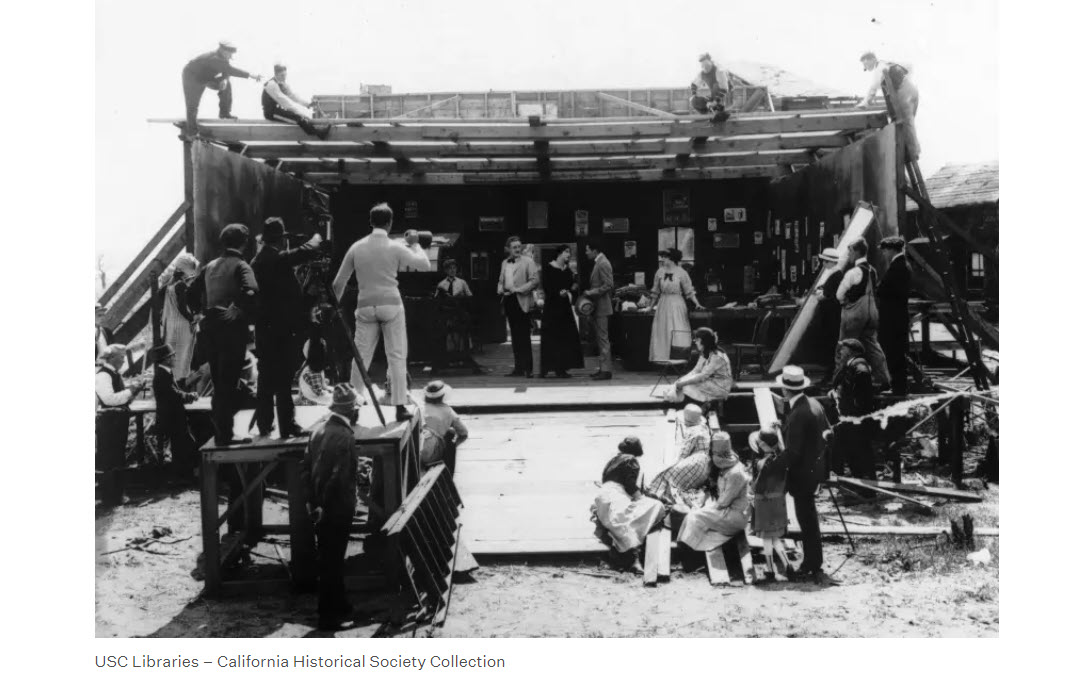
Local 44 History
As the film industry developed into a burgeoning new business, the flourishing studios had the resources to hire and retain the finest craftspersons in the world. Born out of this Hollywood Studio System was a tradition of unsurpassed excellence and integrity, of well-honed skills and innate talent, of veteran personnel and eager new workers — the tradition of IATSE Local 44.
The varied Craft divisions within this local evolved after much thought, energy, time and debate. And the evolution continues — today the entire entertainment industry is in a state of flux due to the ever changing landscape of how the various studios are structured and do business, as well as to the extraordinary advances of technology. The present is always a product of the past, but these two eras — "then" and "now" — are quite different in a number of compelling ways.
Longtime members (some of whom were present when Local 44 received its official IATSE charter in 1939) remember the early days, when working for one studio for a lifetime was the rule, not the exception. The studios kept their core ranks continually employed; if one wasn't working on a film or television project, one was working on lot improvements. IA members even played important roles in constructing studio amusement park "spinoffs," such as Disneyland and the Universal Studios Tour.
At that time and until recently, seniority was the established rule, and members sometimes worked years before advancing to journeyman status. As a result, a member of the industry then traditionally received excellent on-the-job apprenticeship experience. Consequently, a member of that era tended to develop a much broader range of skills than his or her contemporary counterparts simply due to the diversity of work requests the member was expected to perform.
Members today tend to compartmentalize their skills, and focus on a more narrow area of expertise than in the past. Callboard seniority no longer exists — a 30-day newcomer on the out-of-work list is afforded the same privileges as a 30-year veteran. Advancements now occur much more rapidly than they used to. And increasingly, as independent productions are organized, formerly non-IA employees work alongside industry stalwarts.
As a result, lines of responsibility have become blurred. Former nonunion workers — accustomed to the rough-and-tumble world of independent film production and multiple job duties that extended beyond their specific crafts — now find themselves working within lines that are more firmly drawn in the IA. Conversely, union members face the challenge of interacting with new colleagues whose work experience is so different from their own.
While all of this sounds confusing, difficult and potentially adversarial, one should understand the necessary and underlying truth . . .
In the beginning, there was no book, no precedent, no rules set in stone. Various job jurisdictions evolved over time — not out of a sense of provincialism, but because production crews sought out the best, most efficient delineation of responsibilities in the interest of a smooth-running production.
Today, the Studio System is no more. Producers feel an increased obligation to the bottom line and, as a result, there seems to be little appreciation or understanding for the traditions of old. Now, more than ever, the Affiliated Property Craftspersons themselves must tend to the ancestral flame.
It is up to each member to cherish and cultivate this tremendous legacy of which he or she is a part. Respect the foundation that was laid by taking the initiative to learn from those who can pass on skills which have been forged over a lifetime of dedication to these honorable crafts. Hopefully, today's newcomer will be worthy of passing on the torch to an equally deserving novice tomorrow.

